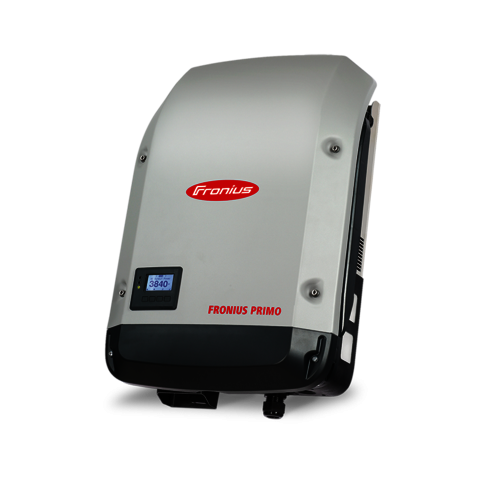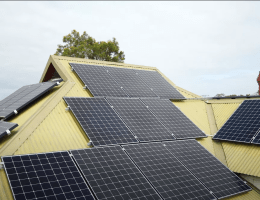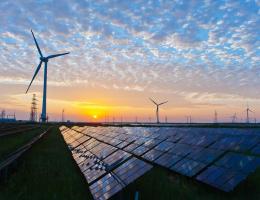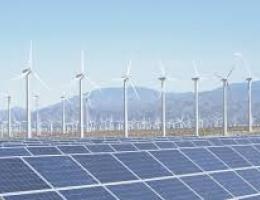
Note: Credit for this article goes to Peter Court for his excellent post in the Facebook group My Efficient Electric Home; it is the basis of this article.
To protect the stability of the electricity grid you are only permitting to feed power into the grid if the grid voltage is within certain limits, these limits are specified by your distribution company (see example in table below). When the grid voltage and frequency reaches these limits the distribution company requires your inverter to take certain actions and ultimately to stop feeding power into the grid.
Here is an example table of limits under which your inverter is expected to stop feeding power into the grid (note higher voltages require faster trip or switch off responses).
Source: TasNetworks
Going forward if you want to connect to the grid your inverter will have to comply with AS4777:2015 Grid connection of energy system via inverters: Inverter requirements. Complying with AS4777:2015 requires your inverter to have what is called 'advanced grid features'; what 'advanced grid features' are in practice is the ability of your inverter to comply with the requirements in the table above as well as other grid requirements to help keep the grid operating within nominal voltage and frequency parameters.
How high (and low) grid voltage threatens your solar production and what you can do about it.
When the grid voltage moves outside its acceptable voltage parameters there are two actions your inverter can take to help restore grid voltage to nominal levels:
- It can throttle back the effective power being exported to the grid by your inverter; which means throttling back your power production resulting in lost revenue for you. A sub-optimal solution indeed.
- It can alter reactive power settings on your inverter so that you can keep producing at your maximum rate and still help control grid voltage. This is a much better solution as it means you don't lose revenue from your system and you support the grid. However this solution won't work for very high or low voltages for which your inverter will need to throttle your production.
What is reactive and real power?
You might be asking yourself the question, what the heck is reactive and effective power isn't it just power that we deal with? Unfortunately it is slightly more complicated than that, reactive power (measured in VAr kilo volt amps reactive) is different to real (or effective) power (measured in W).
Not to worry though, reactive power is reasonably easy to understand using high school maths, it is the component of power produced when AC current and AC voltage are out of phase (i.e. not in sync) the degree to which they are not in sync is represented by the phase angle Ɵ.
The power factor gives the ratio of real to apparent power. When power factor is equal to 0, the energy flow is entirely reactive and stored energy in the load returns to the source (i.e. generator) on each cycle. When the power factor is 1, all the energy supplied by the source is consumed by the load. Power factors are usually stated as "leading" or "lagging" to show the sign of the phase angle Ɵ. Capacitive loads are leading (current leads voltage), and inductive loads are lagging (current lags voltage).
Inductive loads such as induction motors (any type of wound coil) consume reactive power with current waveform lagging the voltage. Capacitive loads such as capacitor banks or buried cable generate reactive power with current phase leading the voltage. Both types of loads will absorb energy during part of the AC cycle, which is stored in the device's magnetic or electric field, only to return this energy back to the source during the rest of the cycle.
Or if you don't like that explanation a common way to think of reactive power is using the pint of beer analogy
So active or effective power is like the beer, reactive power is like the froth. To push this analogy to it maximum, so that it covers the key point of this article, your inverter can be set up so that it can export maximum beer as long as you agree to import froth (if the grid voltage is high) and export froth (if the grid voltage is low). Ok that might not make a whole lot of sense now but hopefully it will once you read the rest of this article.
How can reactive power help you stabilise the grid and export more effective power.
Inverters such as those offered by Fronius have the ability to alter reactive power settings, such that, as the grid voltage rises your reactive power setting alter to compensate, that is working to lower the voltage on the network (you will need to enable this function on your inverter and make sure it is set up correctly).
How this works is if the voltage is too high your inverter can be set to import reactive power (which tends to lower grid voltage) if the voltage is too low your inverter can be set to export reactive power (which tends to raise grid voltage). Note this is all happening over one AC cycle i.e. in a 50th of a second if the grid frequency is 50 Hz.
Importing reactive power from the gird is also called lagging where your inverter helps current to lag voltage. Exporting (or leading) is the opposite; your inverter helps current lead voltage. Below is an example of the requirements for United Energy for power quality response. Note the 44% leading or lagging reactive power response is the end point reactive power setting, in reality the reactive power lead/lag setting ramps to that figure.
The diagram below shows the two responses available to the inverter due to high or low grid voltage (note grid voltage is show as a % of nominal voltage which is 230 volts not an actual voltage), that is, altering either the effective (blue) or reactive (red) power settings to keep voltage within specified limits 220-240 volts. Note the ramping of the leading/lagging settings for reactive power to 42% as seen in the previous figure.
The details of the Fronius reactive power settings and how to set up your inverter for reactive power response are available here (details for solaredge inverters are available here). Note the settings in these manuals are default setting only you will need to check with your distributor (DNSP) for their current recommended settings, these are the required DNSP settings as at 1 Dec 2019.
Reactive power is somewhat complicated, usually because of the jargon around it and poor explanations of what it is all about, but hopefully this article will provide you with the fundamentals to understand what it is and how it relates to your solar power production.
Once your inverter is set up correctly for reactive power response you might notice the amount of power produced and exported by your solar system (and thus your solar revenue) increases, especially if you live in an area of higher grid voltage. If in doubt contact your solar installer and ask about how your inverter was set up. Or, if you feel confident with things technical have a go at setting up reactive power response yourself, with help from your inverter instruction manual or technical support.
Remember the right inverter settings will mean more solar revenue for you and are worth pursuing.






